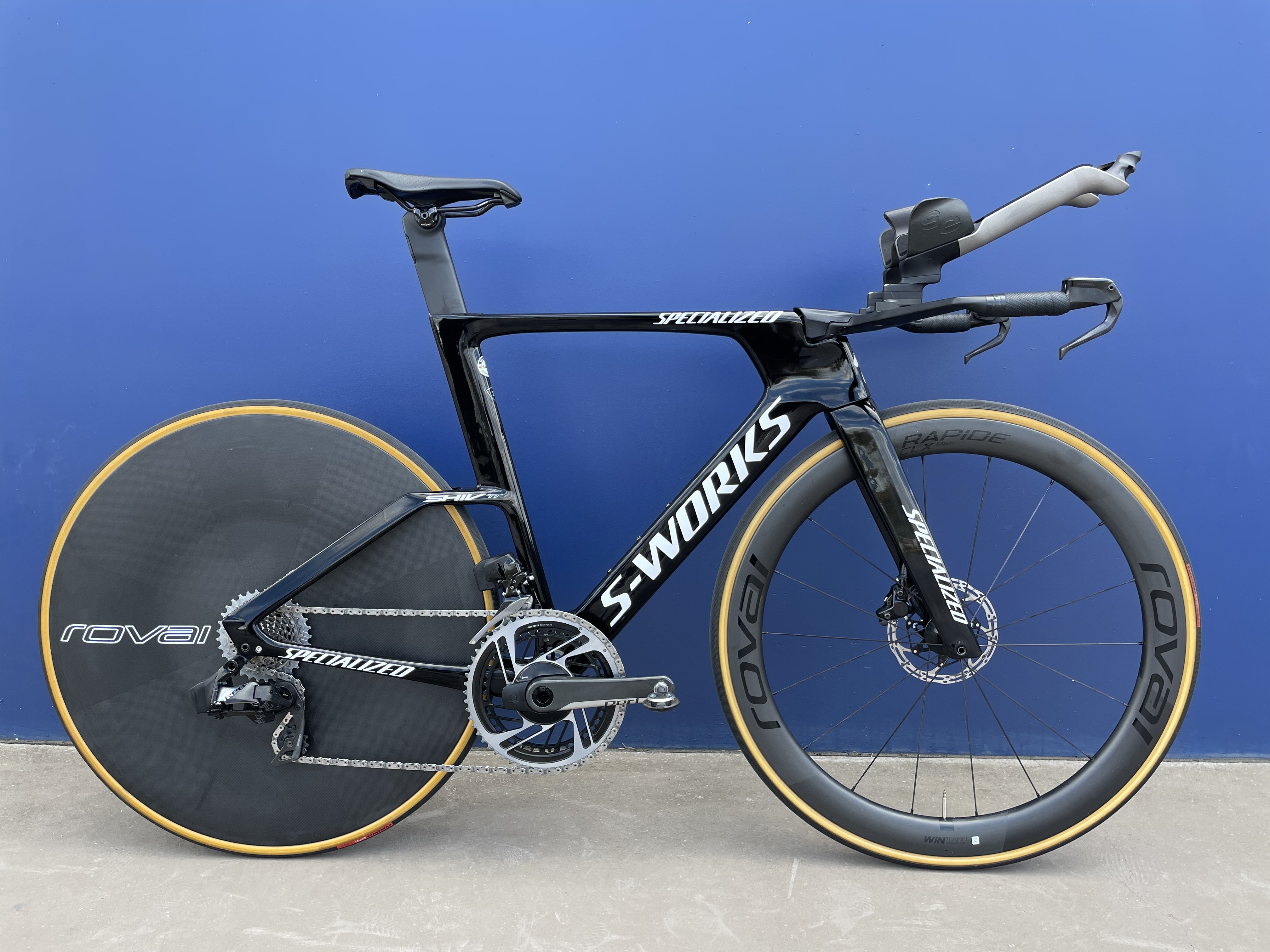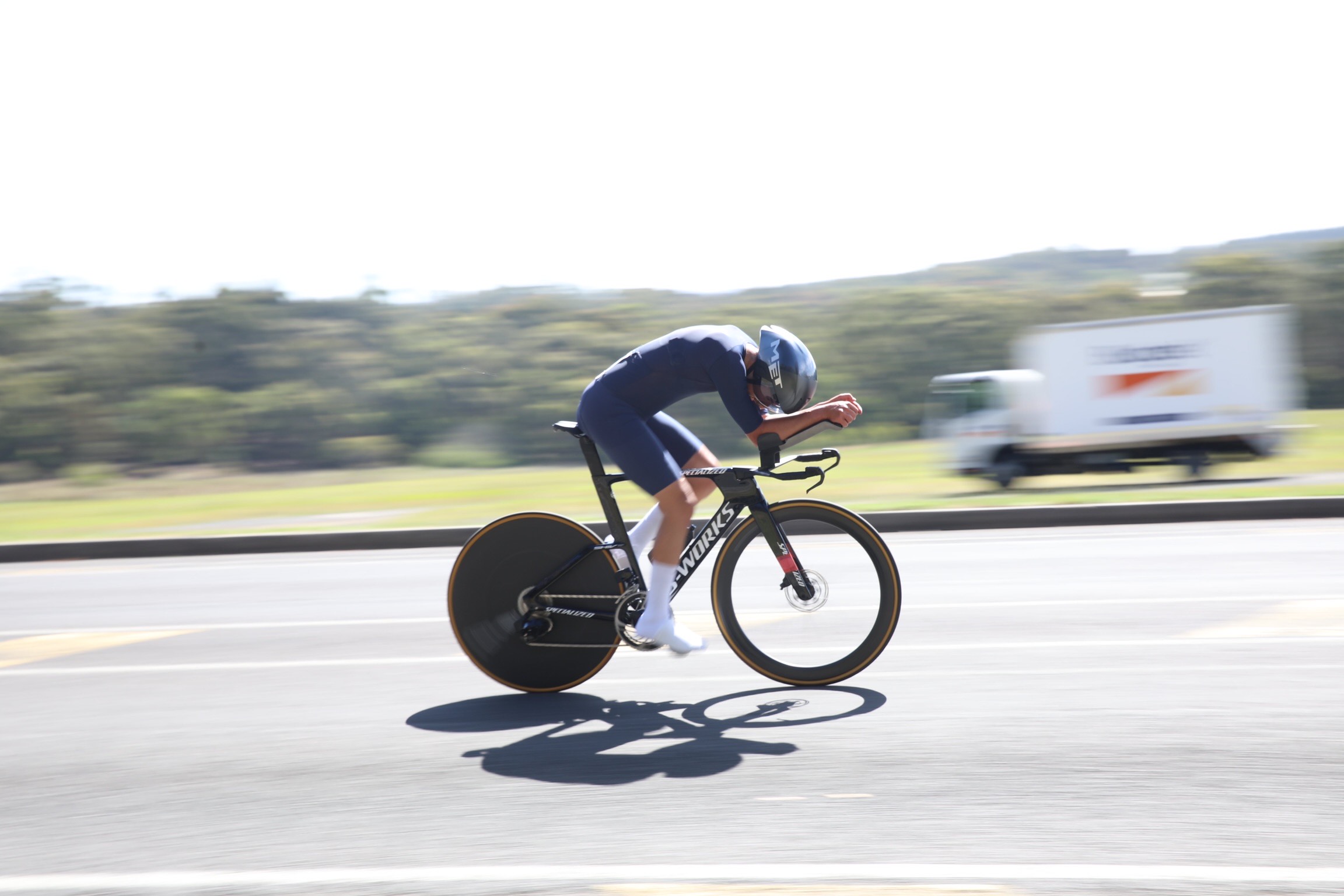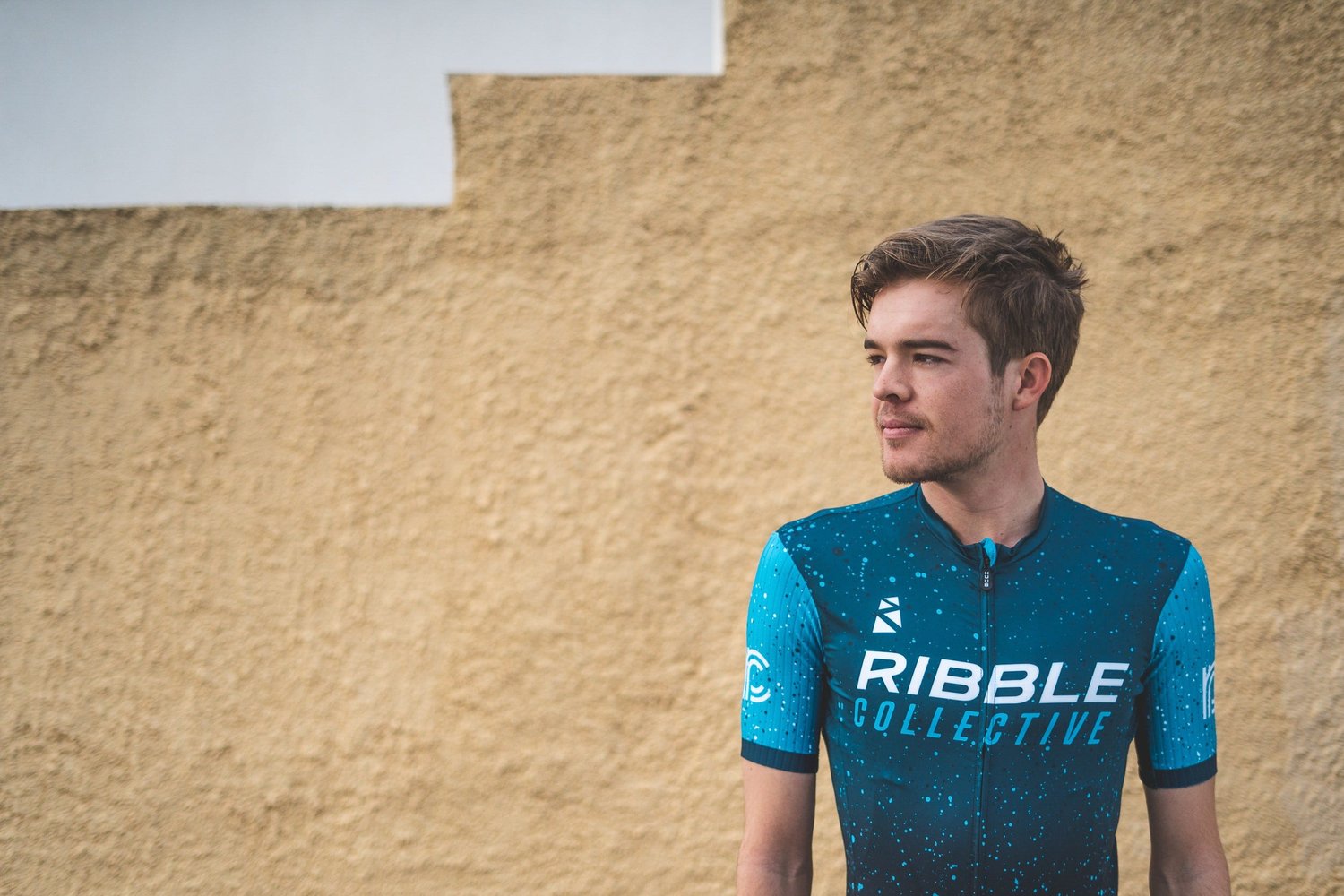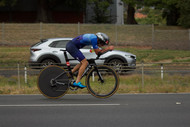In.Triathlon - Lachie Skinner
Posted by Joe Laverick on 4th Apr 2024
“Triathlon is a lifestyle that once it sucks you in, you cannot get enough. You start to see some components will contribute to the quality of an athlete's position and aero performance. Still, they will not make up for a lack of consideration in each other performance factor.
Lachie Skinner is a dirt biker, turned roadie, turned triathlete. Swapping horsepower for pedal power and then to triathlon. There’s a joke somewhere in there about him getting slightly less cool each time…
"Progression becomes an obsession" - Lachie Skinner
The 26-year-old Aussie is a mechanical fitter machinist by trade and can combine his work with his racing. A shift in focus over the winter took him to UCI time-trialling, a shift that had an impact on his triathlon ability that he couldn’t imagine. Let’s explore!
-
For Lachie, it’s not just the training but the technology and equipment behind it. Coming from a dirt bike background growing up, and with a mechanical-based job, the ‘geeky’ nature isn’t a surprise.
“I have an obsession with equipment, and how it functions in unison with training, to result in achieving the best performance.”

He rides a Specialized S-Works SHIV, recently trading in his tri-frameset for the UCI legal Time Trial version. Working closely with Ken from Sync Ergonomics and Adaptive HP in set-up and equipment choices, Lachlan himself reiterates the importance of the body working in conjunction with tech.
‘Improving the human-bike interaction’ is the slogan at Sync Ergonomics, Lachlan dives into what that means to him.
“I’ve found the body has to meet the technology. The balance between your current fitness and your ability to be effective when in position. It’s impossible to buy the fastest position in the world and have your body adapt and work in it straight away. There has to be progression so everything works together as a unit over time.”
Performance is a multi-factorial outcome of physiology, psychology, training strategies, nutrition, race-day execution, biomechanical interventions and equipment. The contribution of each of these factors is specific to a rider’s situation and at Sync we caution against overplaying the importance of equipment.
Our products are one piece of the performance equation and it is true that you can not buy performance, you have to work hard on your limitations and build on your strengths. Often Sync ctheir best. It’s not always about working with the top-end elite athletes, simply about working with athletes that recognise the demands of what they want to do and are willing to push the boundaries to achieve their absolute best. Lachlan is one such example of this.”
- Ken Ballhause
-
Interviewing Lachlan you can hear his technology brain and his dirt biking history come across. I’m interviewing him the day after his most recent triathlon, and he’s telling me how his rear end kept skipping out in the rain, but his dirt biking background allowed him to come into his element.
Our conversation moves onto tyre technology, and his fascination with the gains that tubeless technology could bring him in the future. We talk about aero testing, whether in the wind tunnel or in a velodrome. By the end of the interview, we’re just two nerds geeking out over performance.
Helmet choice is one of the recent changes that Lachlan has made, moving from the KASK Mistral over to the MET Codatronca. Helmet choice can seem to be a relatively inconsequential decision, but riders are often surprised by the difference it can have in aerodynamic performance.
Choosing the correct helmet doesn’t just come down to what looks fastest on the trainer, or what tests fastest. It has to be a collaborative decision which brings a rider’s characteristics and their head position into play.
“Ken and I made a collaborative decision to find the optimum helmet for how I ride. I race a range of triathlon distances and I’ve competed in UCI races this year so it has to be adaptable. The MET offered a better platform for me, and looking at the post-race photos it was the right decision!”

Now that Lachlan is experienced in a range of competitive scenarios and can reproduce his head position and technique in a controlled testing environment, the next step is to evaluate this in-track aero testing on the velodrome.
“Superficially and subjectively it is quite easy to see a helmet profile that fits with an athlete. While the Kask Mistral is typically one of the best helmets on the market, for Lachlan, the shape just doesn’t match his needs. The MET Codatronca is a conservative choice that visually works the best so far, but this is something we want to thrash out soon in track aero testing.” - Ken Ballhause
-
Going into the Aussie summer of racing, Lachie made a big decision to bring UCI events back into his calendar. While his big goal remains in triathlon, he hoped a focus on a specific bike goal would lead to overall better bike leg performance.
“I threw myself in the deep end with the Elite National TT Championships. It was an opportunity to see where the highest level of cycling is and to compete against it. I can bring this back to triathlon with a different attitude and appreciation.”
A move from triathlon into UCI racing isn’t simple, especially at Lachlan's height. The UCI’s position regulations mean a rider has to change equipment and adapt to a position which can often feel more closed off in comparison to their triathlon equivalent.
For Lachie, the UCI position and focus were effectively to start again from scratch and understand the limitations and benefits of extremes in positioning (UCI to Triathlon). The build into National TT Champs was also a unique training stimulus for Lachlan and his numbers are so much better for it.
“After National TT Champs we reverted my position back to my triathlon set-up for IRONMAN 70.3 Tasmania and found an amazing increase in power from the specific build for National TT Champs. While it was a focus that distracted me from swimming, my power numbers back in the triathlon excelled. Riding feels much better now, and the changes for the Tri position are more comfortable.”
-
While the focus on TTing has seen him become a better athlete across the board, his goals remain in triathlon.
“My job sees me working blocks of multiple months at a time on a single project, which then allows me to dedicate a few months to focus on an individual race. It works around a race season quite nicely.”
When he’s not working, Lachie trains for around twenty hours per week. The distribution of disciplines depends on his training block, working closely with his coach Adam Kelsall. The heavy focus on bike training had a dreamy overall impact.
“I spent so much time training at a higher intensity for National TT Champs that it lifted all of my training zones. Of course, I’m a better bike rider for that, but across the swim and run I’m up to it. I gained an all-around benefit from doing a high-intensity TT build. The numbers I saw in my most recent triathlon saw an increase in power just below 20%.”
This highlights something that is so commonly seen in endurance training: getting stuck in the rut of “train how you race”. For triathletes, there is commonly an over-emphasis on sub-threshold intensity, foregoing the training that stimulates an improvement in VO2max (among other physiological qualities).
“Periodised training, periodised nutrition, maybe the next push in sports science will be periodised technical stimulus? Maybe behind closed doors this already happens?” - Ken Ballhause
-
Other than a renewed perspective on endurance training and time trial performance, Lachie’s highlight of the past year is 12th place in the Long Distance World Triathlon Championships. Representing Australia in his age group, it involved a 3km swim, 120km cycle and a 30km run. And no doubt, Triathlon is back on the agenda and now becomes the focus again.
Going forward, he wants to go back to the World Triathlon Long Distance events, especially with the World Championships being held in Australia this year. But, with a qualification for Ironman 70.3 World Championships to his name too, that’ll be in the plan.
-
Where to from here? Ken and Lachlan have already benchmarked a host of changes to keep pushing the boundaries of Lachlan’s performance. Finding that “tipping point” for power drop-off, defining the lowest possible pad stack/torso angle, saddle options, hydration system variables and skinsuit, to name a few.
Lachlan’s story is just one example of why a time trial is such a cool discipline of cycling and where it can be used as a vehicle to push the boundaries of human achievement.
“You’ve got to balance the position into what you can biomechanically achieve. I’m keen to keep progressing. I’m intrigued to find that crossover point. Where is the point that we take the position so far that it saps power? It’s only at that point do I know we’ve gone too far.” - Lachie Skinner
About the author
Joe Laverick’s cycling introduction was via the British time-trial scene, since starting the sport, he has been all about speed. He’s a freelance writer and privateer racer who mixes road, time trial and gravel racing. To this day, he remains one of the only riders on the planet to have beat Remco Evenepoel in a time trial.


